My Journey with Morgan Dollars: A Numismatic Treasure of American History
Introduction As Stephen Pfeil, President of Global Coin, I’ve spent decades immersed in the world of numismatics, and few coins capture my imagination like the Morgan Silver Dollar. Struck from 1878 to 1904, and again in 1921, this iconic coin...

Introduction
As Stephen Pfeil, President of Global Coin, I’ve spent decades immersed in the world of numismatics, and few coins capture my imagination like the Morgan Silver Dollar. Struck from 1878 to 1904, and again in 1921, this iconic coin is a cornerstone of American coin collecting, celebrated for its stunning design, historical significance, and remarkable rarity in certain issues. At Global Coin, we take pride in offering these treasures to collectors who share my enthusiasm for their beauty and stories. Join me as I explore the history, design, collectibility, investment potential, market trends, notable varieties, and practical tips for acquiring Morgan Dollars, emphasizing their enduring appeal in the numismatic world.
History and Background

The Morgan Dollar’s story began with the Bland-Allison Act of 1878, minted from 1878, as a response to the economic fallout from the Coinage Act of 1873, which demonetized silver and sparked the “Free Silver” movement. The Bland-Allison Act was passed in February 1878. Representative Richard P. Bland and Senator William B. Allison were key figures in the passage of this Act. I recall learning how this legislation required the U.S. Treasury to purchase millions of ounces of silver annually to mint silver dollars, reviving the dollar coin after a hiatus since 1873. Named after its designer, George T. Morgan, the coin was struck at mints in Philadelphia (no mintmark), San Francisco (“S”), New Orleans (“O”), Carson City (“CC”), and Denver (“D” in 1921 only).
Production was prolific—dollars were minted in large quantities, with the entire mintage totaling over 650 million coins across its run—but the Pittman Act of 1918 authorized the melting of 270 million, reducing surviving populations. The Pittman Act had a significant impact on U.S. silver reserves and the government’s stock of silver bullion, and, along with the Sherman Silver Purchase Act, shaped the history of silver coinage. During World War I, the British government purchased large amounts of silver bullion from the U.S. as part of wartime efforts. The 1921 issue, struck after a 17-year gap, marked the coin’s final chapter before the Peace Dollar took over. What fascinates me is how these coins, born from political and economic turmoil, became symbols of America’s Gilded Age, circulating widely in the West while often stored in Treasury vaults back East. Their connection to the Comstock Lode and the Wild West adds a layer of romance that I find irresistible.
The Carson City Connection

One of the most captivating chapters in the story of Morgan Silver Dollars is the legacy of the Carson City Mint. Nestled in Nevada, the Carson City Mint was established in 1863 to serve the booming silver mining industry, and it quickly became a vital part of silver dollar production. Between 1878 and 1893, the Carson City Mint struck a total of 13,862,000 Morgan Silver Dollars—coins that today are among the most coveted by collectors.
What sets Carson City Morgan Silver Dollars apart is their limited mintage and undeniable historical significance. While other mints like Philadelphia, San Francisco, New Orleans, and later Denver produced millions of silver dollars, Carson City’s output was comparatively small, making its coins rare and highly sought after. Each Carson City Morgan can be identified by the distinctive “CC” mint mark on the reverse, a detail that instantly excites coin enthusiasts searching for these treasures.
Designed by George T. Morgan, the Assistant Engraver at the Philadelphia Mint, these coins were struck from 90% pure silver and 10% copper, weighing in at 26.73 grams. The Carson City Mint produced a total of 57 different coin denominations during its operation, but it’s the Morgan Silver Dollars that have truly captured the imagination of collectors. Their connection to the Wild West, the Comstock Lode, and the pioneering spirit of America’s frontier days adds a layer of romance and historical depth that few other coins can match. For anyone passionate about United States history and numismatics, owning a Carson City Morgan Silver Dollar is like holding a tangible piece of the American West.
The Impact of the Pittman Act
The Pittman Act of 1918 stands as a pivotal moment in the history of the Morgan Silver Dollar, dramatically reshaping the landscape for collectors and investors alike. Passed during World War I, the act was a direct response to the British government’s urgent need for silver bullion to support its war effort. To meet this demand, the United States government authorized the melting of over 270 million Morgan Silver Dollars, selling the silver to the British at a fixed price.
This massive melting operation had a profound effect on the availability and value of Morgan Silver Dollars. With so many coins removed from circulation, surviving examples—especially those from lower mintages—became significantly rarer and more valuable. The Pittman Act didn’t just reduce the number of coins; it also underscored the strategic importance of silver as a resource, prompting greater efforts to conserve and recycle silver in the years that followed.
The aftermath of the Pittman Act also ushered in a new era for American coinage. To replace the melted Morgans, the United States Mint introduced the Peace Dollar in 1921, a coin that would go on to symbolize a new chapter in American history. The Peace Dollar, minted from 1921 to 1935 and briefly in 1965, became a beloved series in its own right, but the scarcity created by the Pittman Act ensured that Morgan Silver Dollars would remain a cornerstone of numismatic collections. For collectors today, the Pittman Act is a reminder of how world events can shape the fate of coins, turning everyday silver dollars into rare and treasured artifacts.
Morgan Silver Dollar Design and Specifications

The Morgan Dollar’s coin design is a masterpiece that never fails to impress me. Morgan, a young British engraver at the U.S. Mint, crafted the obverse with a profile portrait of Liberty, modeled after an American woman, Philadelphia schoolteacher Anna Willess Williams. Her portrait, adorned with a Phrygian cap and wheat sprigs, exudes strength and elegance, with inscriptions “E PLURIBUS UNUM” and the mintage year. The reverse design features a heraldic eagle clutching arrows and an olive branch, symbolizing war and peace, encircled by a laurel wreath with Morgan’s “M” signature on the bow. Inscriptions include “UNITED STATES OF AMERICA,” “IN GOD WE TRUST,” and “ONE DOLLAR.” Some early Morgan Dollars were struck in high relief, which affected production and die longevity.
The coin design’s large size and 90% silver content give it a satisfying heft, and its reeded edge adds tactile charm. Varieties, like the 1878 7 Tail Feathers versus 8 Tail Feathers reverse, keep me intrigued, as they reflect Morgan’s evolving vision and early minting adjustments.
Specifications for the Morgan Dollar:
|
Attribute |
Detail |
|---|---|
|
Composition |
90% Silver, 10% Copper |
|
Weight |
26.73 g (0.7734 oz pure silver) |
|
Diameter |
38.1 mm |
|
Thickness |
2.4 mm |
|
Edge |
Reeded |
|
Face Value |
$1 |
|
Mint Marks |
None (Philadelphia), S, O, CC, D (1921) |
Mintage and Availability

At Global Coin, I’ve seen how Morgan Dollar mintages vary dramatically, driving their collectibility. While millions were struck—Philadelphia’s 1896 issue reached 9.9 million—others, like the 1893-S, had just 100,000. Carson City issues, produced in the Nevada desert, are particularly scarce, with mintages often under 1 million (e.g., 1889-CC at 350,000). Proof coins, struck in limited quantities (e.g., 1,006 in 1878), are rare gems coveted by collectors like me. A coin's population directly influences its value and availability, with lower populations often commanding higher premiums among collectors.
Selected Mintage Figures:
|
Year/Mint |
Mintage |
|---|---|
|
1878 (Phila) |
10,508,800 |
|
1889-CC |
350,000 |
|
1893-S |
100,000 |
|
1895 (Proof) |
880 |
|
1921-D |
20,345,000 |
The Pittman Act’s melting significantly reduced surviving coins, especially for key dates. Rare dates and high-grade examples often come from auction houses like Heritage Auctions. Finding a pristine Carson City or 1893-S is a thrill that keeps me hooked. The General Services Administration played a significant role in the sale of government-held Carson City Morgan Dollars, distributing these coins through GSA-administered auctions and sales.
Collectibility and Value

As a collector, I’m drawn to the Morgan Dollar’s vast collecting possibilities. With 96 major date-and-mintmark combinations, plus numerous varieties, collectors can pursue a full set or focus on key dates like the 1893-S, valued at $4,000 in Fine condition and over $1 million in MS65 (PCGS Price Guide). Notably, Morgan Dollars were recognized as legal tender, which contributed to their widespread use and collectibility. High-grade coins, especially PCGS MS65 or NGC MS65 and above, command significant premiums due to their rarity in pristine condition. For example, an 1889-CC in MS65 can exceed $500,000, while common dates like 1881-S in MS65 are around $150.
The series’ depth—varieties like the 1888-O “Hot Lips” doubled-die or 1879-S Reverse of 1878—keeps me engaged. At Global Coin, we’ve seen collectors gravitate toward Carson City issues for their low mintages and Wild West allure, often outpacing other mints in demand. The NGC Price Guide confirms that top-grade rarities appreciate steadily, driven by collector enthusiasm and the fixed supply of these historical coins.
Investment Potential
As an investor, I view Morgan Dollars as a dual asset: a silver store of value and a numismatic collectible. Silver’s price, at $34.22 per ounce as of June 2025 (MacroTrends), gives each coin a melt value of about $26, but key dates and high grades far exceed this. Compared to modern bullion coins like the American Silver Eagle, Morgans offer:
-
Historical Premiums: Rare dates like 1893-S or 1889-CC appreciate due to their fixed supply and collector demand.
-
Liquidity: High-grade and key-date Morgans are highly sought after, ensuring marketability.
-
Tangible History: Their Gilded Age roots add value beyond their metal content.
Gold coins, such as the historic $20 Double Eagle, are another popular option for collectors and investors. While gold coins often carry significant value due to their gold content and pivotal roles in American coinage legislation, Morgan Dollars stand out for their unique place in silver coin history and their connection to the economic and political events of the late 19th century.
Silver’s 27.5% rise in 2025 suggests continued growth, with forecasts predicting $40 per ounce by 2026 (LiteFinance). At Global Coin, I recommend key dates or MS65+ commons for long-term appreciation, though their numismatic premiums make them less liquid than bullion coins. For investors, Morgans combine silver bullion’s stability with the potential for significant numismatic gains.
Market Trends

I’ve watched the Morgan Dollar market thrive, with auction records reflecting robust demand. A 1893-S MS67 sold for $2.1 million in 2019 (Heritage Auctions), and high-grade Carson City coins regularly fetch six figures. The global silver coin market is projected to grow at a 4.2% CAGR through 2030 (Market Research Future), with Morgans leading due to their historical appeal. At Global Coin, we’ve noted increased interest in rare dates, driven by collectors and investors diversifying amid economic uncertainty. Recent X posts highlight Morgans alongside paper money s a hedge against inflation, reflecting their enduring popularity.
Notable Varieties and Errors
The Morgan Dollar series is a treasure trove of varieties that excite me as a collector:
-
1878 7/8 Tail Feathers: Early strikes show 7 over 8 tail feathers, valued at $100–$5,000+ depending on condition.
-
1888-O “Hot Lips”: A doubled-die obverse with Liberty’s lips doubled, worth $200–$10,000.
-
1895 Proof: Known as the “King of Morgans,” with only 880 minted, valued at $50,000+ in PR65.
-
1889-CC: A Carson City key with a mintage of 350,000, valued at $1,500–$500,000.
Errors like the 1887-O “Eyelid” doubled-die add intrigue, making each coin a potential discovery. These varieties, often cataloged in the VAM (Van Allen-Mallis) system, keep collectors like me hunting for hidden gems.
Key Dates and Rarities
For collectors, the thrill of the hunt often centers on the key dates and rarities within the Morgan Silver Dollar series. Among these, the 1893-S Morgan Silver Dollar stands out as a true legend, with a mintage of just 100,000 coins—making it one of the rarest and most valuable silver dollars ever produced. Another highly prized coin is the 1889-CC Morgan Silver Dollar from the Carson City Mint, with only 350,000 coins minted, its scarcity and Wild West heritage driving intense demand.
The 1878-CC Morgan Silver Dollar, the first year of issue from Carson City, is also a collector favorite, with a mintage of just over 2.2 million coins. While some dates, like the 1901 Morgan Silver Dollar, are more common (with over 6.9 million coins minted), they still hold a special place in collections due to their historical significance and the enduring appeal of the series. The 1921 Morgan Silver Dollar, with a mintage exceeding 44 million, is another key date, marking the final chapter of Morgan Silver Dollar production.
Other notable rarities include the 1879-CC, 1880-CC, and 1881-CC Morgan Silver Dollars, each with their own stories and allure. The rarity and value of these coins are determined by a combination of factors: mintage numbers, condition, and collector demand. It’s this blend of history, scarcity, and beauty that makes the Morgan Silver Dollar series one of the most popular and highly collectible in the world, with each coin offering a unique window into America’s past.
Morgan and Peace: A Numismatic Transition

The transition from the Morgan Silver Dollar to the Peace Dollar marks a defining moment in American numismatic history. The Morgan Silver Dollar, minted from 1878 to 1904 and again in 1921, is celebrated for its classic depiction of Lady Liberty and the majestic eagle—symbols of liberty and strength. Designed by George T. Morgan, this coin became an enduring icon of the Gilded Age and the American West.
In 1921, as the last Morgan Silver Dollars were struck, a new era began with the introduction of the Peace Dollar. Designed by Anthony de Francisci, the Peace Dollar features a striking image of a bald eagle perched on a rock, clutching an olive branch and symbolizing peace and hope for a world emerging from the devastation of World War I. The Peace Dollar was minted from 1921 to 1935, and its design reflects a shift in American values—from the celebration of liberty and expansion to a focus on peace and international cooperation.
Both coins are highly collectible, each with its own distinct artistry and historical significance. The Morgan Silver Dollar is revered for its beauty and connection to Lady Liberty, while the Peace Dollar is cherished for its powerful imagery and message of peace. Together, they represent a fascinating transition in American coinage, capturing the evolving spirit and priorities of the nation.
Collecting the 1921 Morgan

The 1921 Morgan Silver Dollar holds a special place in the hearts of collectors, not only for its historical significance but also for its role as the final chapter in the Morgan Dollar series. With over 44 million coins minted, the 1921 Morgan is one of the most common dates, yet it remains highly valued and sought after by numismatists.
This key date was produced at three different mints: Philadelphia (no mint mark), Denver (“D”), and San Francisco (“S”), with the Philadelphia Mint accounting for the largest share of the mintage. Collectors can identify each coin by its date and mint mark, making the 1921 Morgan an accessible yet meaningful addition to any collection.
Despite its large mintage, the 1921 Morgan Silver Dollar is prized for its connection to the end of an era in American coinage. High-grade examples, especially those with minimal wear and strong luster, are particularly desirable and can command significant premiums. For anyone interested in United States history or the evolution of silver dollars, the 1921 Morgan offers a tangible link to the past and a fitting tribute to the legacy of the Morgan Silver Dollar series. Whether you’re a seasoned collector or just starting out, adding a 1921 Morgan to your collection is a way to own a piece of numismatic history.
How to Buy and Store
At Global Coin, we make acquiring Morgan Dollars seamless. For rare dates and high-grade coins, auction houses like Heritage Auctions are ideal. I always recommend buying certified coins from PCGS or NGC to ensure authenticity and quality, especially for key dates.
To preserve their value, store Morgan Dollars in protective holders or slabs, ideally in a home safe or bank deposit box. Handle them with cotton gloves to avoid tarnish, and keep them in a cool, dry environment to maintain their luster. Proper storage ensures these coins remain pristine for future generations.
Conclusion
As President of Global Coin, I’m thrilled to share my love for Morgan Dollars. Their stunning design featuring outstretched wings , rich history tied to the Wild West and Gilded Age, and vast collecting possibilities—from key dates like the 1893-S to varieties like the “Hot Lips”—make them a numismatic icon. With silver prices rising and collector demand strong, there’s no better time to start or expand your collection. Visit shopglobalcoin.com to explore our curated Morgan Dollar selection and embark on your own journey with these American treasures.
Related Articles
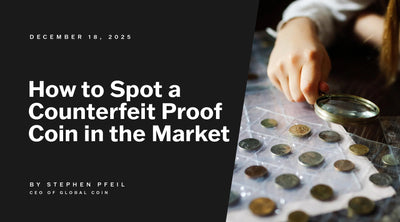
How to Spot a Counterfeit Proof Coin in the Market
How to Spot a Counterfeit Proof Coin in the Market In the world of numismatics, few things hold ...
Discover More
BREAKING NUMISMATIC NEWS: Large batch of 2025 Marine Privy Coins MELTED by U.S. Mint
BREAKING NUMISMATIC NEWS: Large batch of 2025 Marine Privy Coins MELTED by U.S. Mint A historic ...
Discover More
Tax Implications When You Sell Gold Bullion in Different States
Disclaimer: The following content is for informational purposes only and should not be construed ...
Discover More

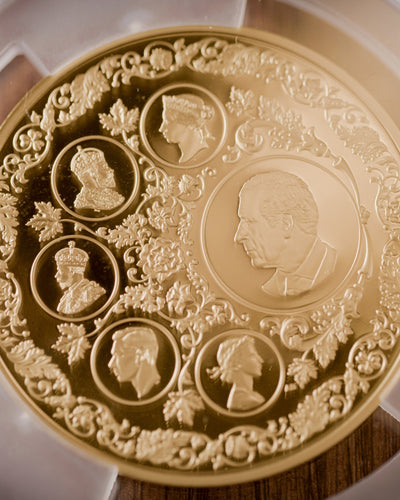
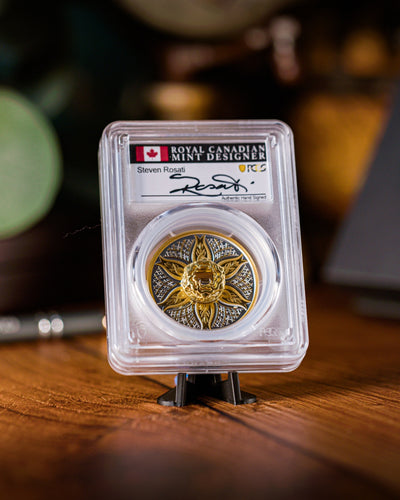
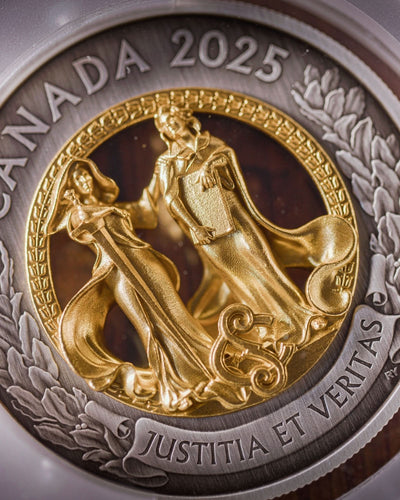
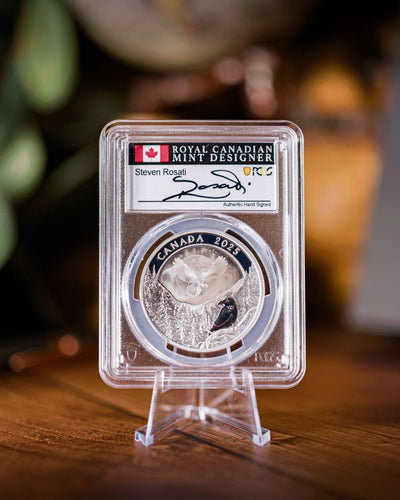
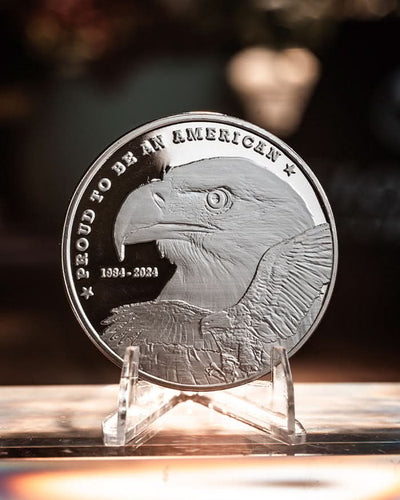
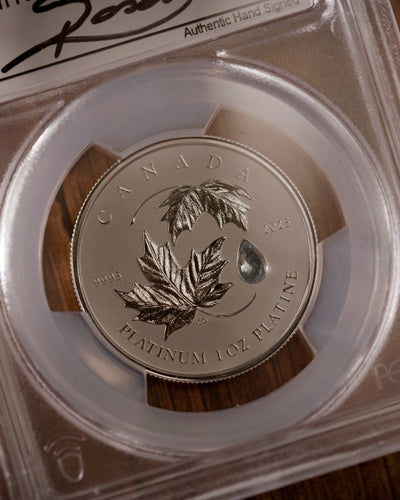
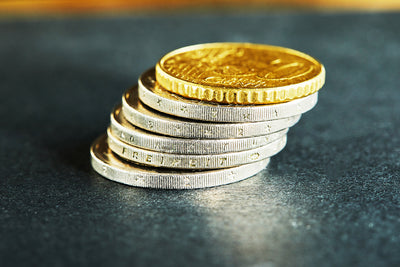
Leave a comment
This site is protected by hCaptcha and the hCaptcha Privacy Policy and Terms of Service apply.